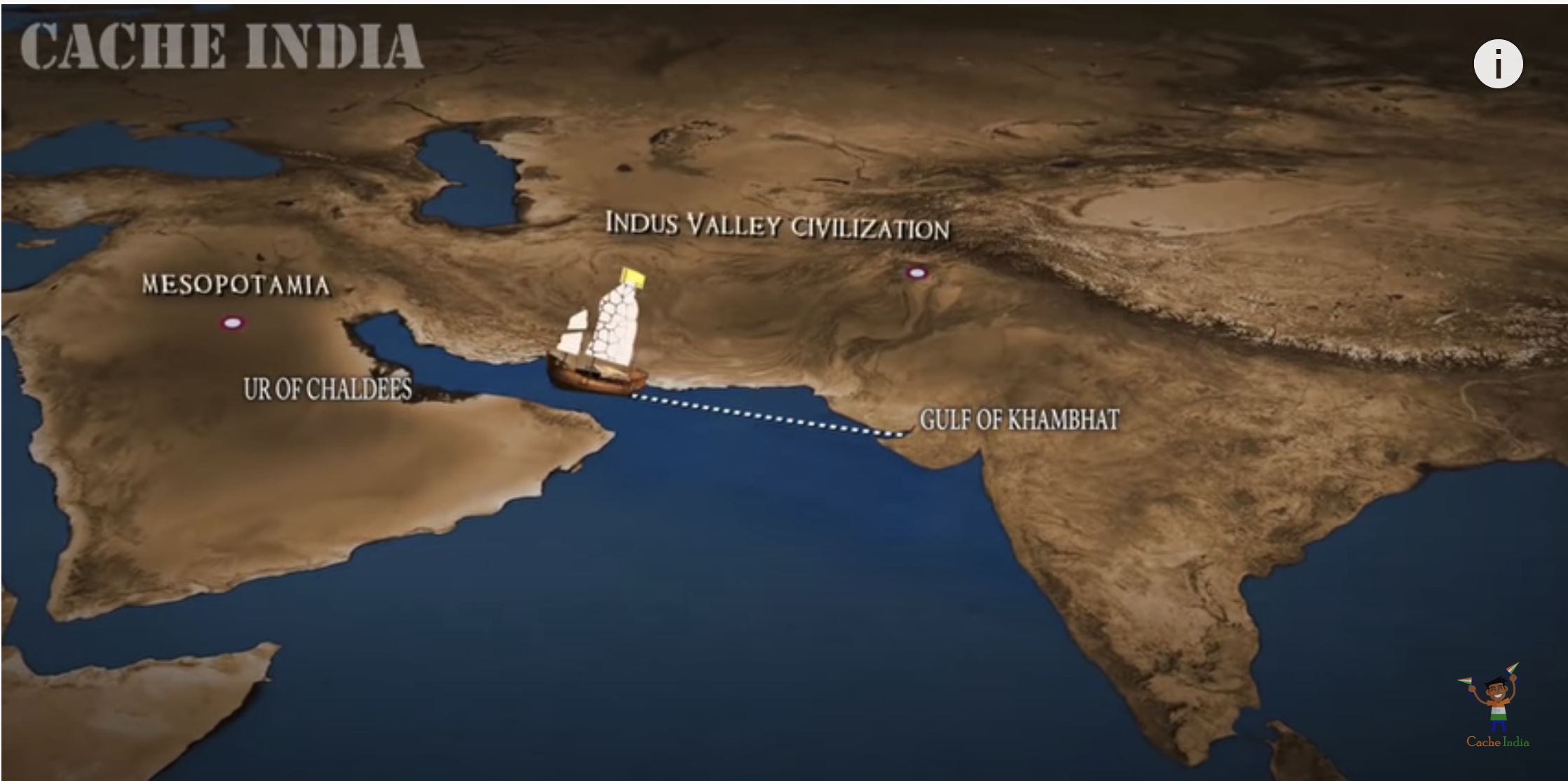Indian Ocean Trade has been a key factor in East–West exchanges throughout history. This video describes the typical trade routes from Indus Valley times to modern times. Long distance trade in dhows and sailboats made it a dynamic zone of interaction between peoples, cultures, and civilizations stretching from Java in the East to Zanzibar and Mombasa in the West. Cities and states on the Indian Ocean rim were Janus-faced. They looked outward to the sea as much as they looked inward to the hinterland.
There was an extensive maritime trade network operating between the Harappan and Mesopotamian civilizations as early as the middle Harappan Phase (2600-1900 BCE), with much commerce being handled by “middlemen merchants from Dilmun” (modern Bahrain and Failaka located in the Persian Gulf). Such long-distance sea trade became feasible with the development of plank-built watercraft, equipped with a single central mast supporting a sail of woven rushes or cloth.
Several coastal settlements like Sotkagen-dor (astride Dasht River, north of Jiwani), Sokhta Koh (astride Shadi River, north of Pasni), and Balakot (near Sonmiani) in Pakistan along with Lothal in western India, testify to their role as Harappan trading outposts. Shallow harbors located at the estuaries of rivers opening into the sea allowed brisk maritime trade with Mesopotamian cities.
https://www.youtube.com/watch?v=LbruHHtfKwQ
A daily summary of world news for Hindus and non-Hindus alike

